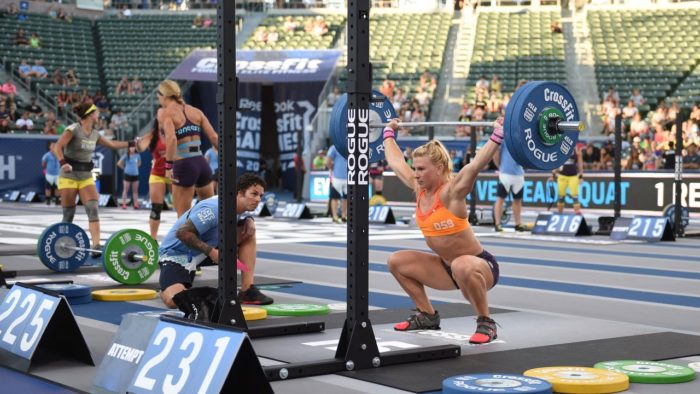
Why Women can Hack Training Volume Better than Men
You heard us right girls. We know you’re all strong independent, boss-girls, but it’s an undeniable fact that men have an edge in terms of size and ability to grow strength. However, it turns out there is an area of lifting where you’ll be stronger than men… kind of.
Strength is defined in so many different ways. A lot of the time it’s relative to your size and sex. But there is new science out there to support the fact that women’s bodies are better prepared to handle training for volume than men are.
Before we delve in to this one, we’re gonna throw out a disclaimer. Every person is different and the hormonal balances within their bodies can alter the processes we are about to discuss in many ways.
Everything from size, to age, to weight, to the way your cells work can have an impact on this. However, the research is super interesting, and it will help you learn more about where your strengths may lie as a weight-lifting woman. Bear with us on this and let us know what you think.
In a nutshell…
The research appears to show that, while men are more likely to achieve a heavier load over a shorter span of reps, women are more prepared to perform strength-based exercises for more repetitions, over a longer period.
So basically, our bodies are designed to handle strength in very different ways and women can endure more volume training than men. With that in mind, we shouldn’t be using the same calculations as the guys to estimate our one rep max.
Make sense? Here’s what the research says about it all.

Metabolism
Men and women go through different metabolic processes when they work out. Metabolizing glucose is essential to exercise, as it provides the energy you need for muscle contraction. Without it, your body won’t be able to perform normal functions, never mind smash an intense squat day in the gym.
The science shows that while men generally have a higher rate of elevated fasting blood glucose, they’re slower on the uptake compared to women [1]. Men generally have between 50-100% higher rate of glucose in the blood, but they are 30-50% slower than women when it comes to using it.
This means that, while men have more glucose readily available to them for performing a super heavy lift, women are better at taking and using the fuel for endurance style lifts.
Estrogen
With so much talk about the strength building qualities of testosterone, we know you’ll be surprised to find out that estrogen plays a key roll in helping women hack endurance lifting.
Let’s get down to the science. Mitochondria and ATP are a key part of the glucose uptake process. With them working together, you’ll have more fuel for more muscle contraction. As soon as you start lifting heavy or exercising, your body starts to release energy so you can handle the strain. We’re already aware that women’s uptake is more efficient than a man’s – and that’s where estrogen comes in.
You may not know this, but everyone, men and women alike, have estrogen receptors on our mitochondria [2]. When we need energy, our mitochondria will start to take in as much of the hormone as possible[3]. As we produce more estrogen than men, our body is better primed to increase glucose uptake for longer periods of time.
In a nutshell, when you start to lift, your body triggers the processes that begin energy production and uptake. When that happens, your mitochondria start using the abundance of estrogen in your body to rapidly create energy, so you can lift. This is what makes you feel energized, ready for your next set.
Turns out, estrogen isn’t the Achilles heel of strength development, it actually gives women an edge when it comes to training volume.

Muscle fibers
Men and women have very different muscle fiber make ups. We all know that men have more muscle in general – women hold about two thirds of the muscle mass of men. However, we have higher proportion of type 1 muscle fibers and more capillary density[4].
Type 1 muscle fibers are also known as slow twitch muscles, which basically means they’re better suited to longer, endurance-based exercises. They also hold more mitochondria, and we’ve just discussed its important role in increasing glucose uptake.
Overall, type 1 muscle fibers allow more blood flow to the muscle which, in turn, boosts glucose oxidization. That means you’ll produce more ATP which will boost your energy for higher volume workouts.
Essentially, this all comes back to the fact that a woman’s body is more efficient and handling glucose uptake, which keeps fatigue at bay in volume-based strength training.
What does this mean for you?
Girl, when you look at the science, it appears that the internal processes of women is better designed to handle load. Although we might not have as much energy readily available as men, our metabolisms are better equipped to use the glucose we do have in our system, through a combination of hormonal and muscular makeup.
It’s all great chatting about it, but what does it mean for you in the gym?
Where a man is more likely to hit their true one rep max, a woman can hit a high three rep max, but that load might only be a small amount less than her one rep max. So, where guys might be able to add a larger amount to achieve their max lift, our strength really shows in the higher volume exercises.
Everyone is different, and this information is just a guide to show you how your inner workings could impact your training as a woman.
So next time you’re training volume, know that your chemical makeup has got your back and get on those heavy lifts, girl. You might be able to handle it better than you think.
Looking for more insightful fitness gold from your girls at SpotMeGirl? Here you go:
- What Does Pre-Workout Do?
- A Girls Guide to Muscle Hypertrophy – Building Shape and Size
- Study Shows Individuals with Weak Muscles are More Likely to Die Early
References:
[1] Faerch K, et al. Sex differences in glucose levels: a consequence of physiology or methodological convenience? The Inter99 study. Diabetologia. 2010 May;53(5):858-65. [2] Liao TL, et al. Estrogen receptor-β in mitochondria: implications for mitochondrial bioenergetics and tumorigenesis. Ann N Y Acad Sci. 2015 Sep;1350:52-60. [3] Klinge CM. Estrogenic control of mitochondrial function and biogenesis. J Cell Biochem. 2008 Dec 15;105(6):1342-51. [4] Staron RS, et al. Fiber type composition of the vastus lateralis muscle of young men and women. J Histochem Cytochem. 2000 May;48(5):623-9.



